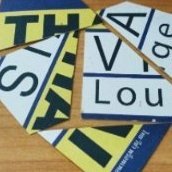Penis Erected Against ‘Widow Ghost’
-
Recently Browsing 0 members
- No registered users viewing this page.
-
Topics
-
-
Popular Contributors
-
-
Latest posts...
-
103
-
11
Bongino v Bondi - the first MAGA Crisis
Both of them blow - it's how they got their positions. -
6
Accident Rescue Worker Lowered 10 Metres to Save Drowning Dog
Well "dang me" if its not "dew"! -
32
Visa Renewal
I'm pretty sure DrJack54 is referring to the opportunity of making 8% interest with the money that is tied up sitting in a Thai bank account. From a financial point of view, it is better to pay an agent or to use the income method, instead of tying up money and letting it sit idly in a Thai bank. -
32
Visa Renewal
"Opportunity Cost" is basic economics 101. It's not an Australian term. Basically it's the loss involved in one financial option compared to another. Keeping 800k in a Thai bank at ~ 1% has a cost. Those funds could earn much more in eg shares etc. That is one significant reason some folk opt to use an agent. -
76
Economy Trump Confirms 36% Tariff on Thai Goods via Truth Social Post
Although another 3.5 years of Trump will be hell, I wish the countries of the world would get some backbone and hold their ground. The prices in the US would skyrocket. The US consumer would revolt, and Trump would have failed. As the saying goes, "Together we stand, divided we fall."
-
-
Popular in The Pub







.thumb.jpeg.d2d19a66404642fd9ff62d6262fd153e.jpeg)




Recommended Posts
Create an account or sign in to comment
You need to be a member in order to leave a comment
Create an account
Sign up for a new account in our community. It's easy!
Register a new accountSign in
Already have an account? Sign in here.
Sign In Now